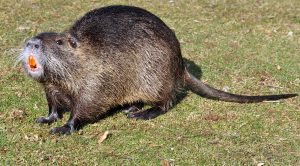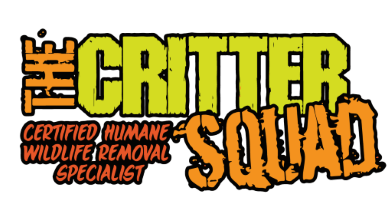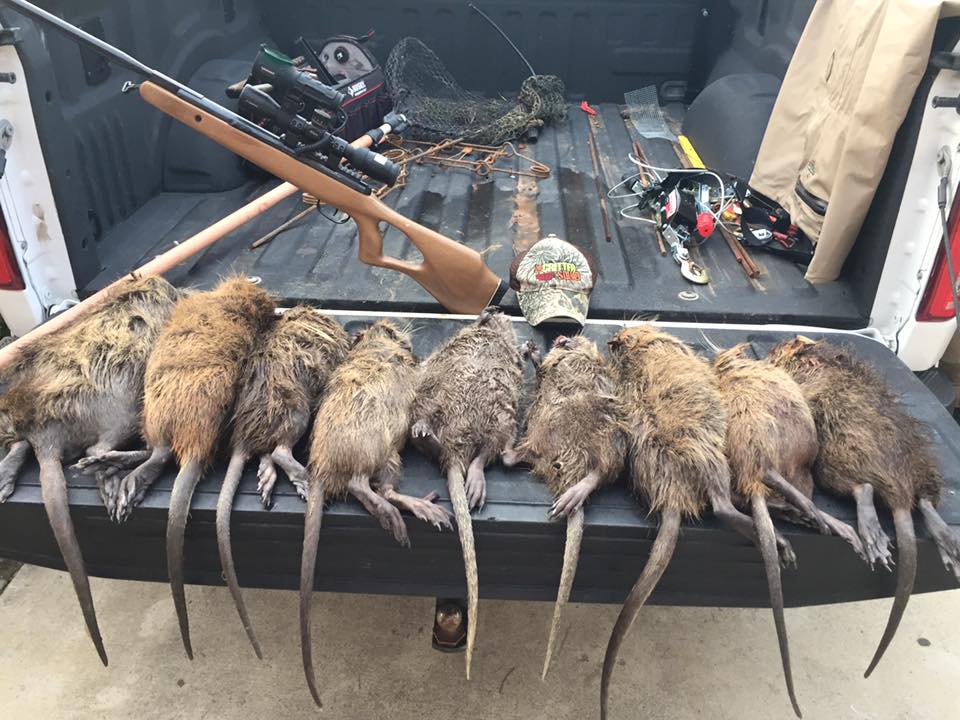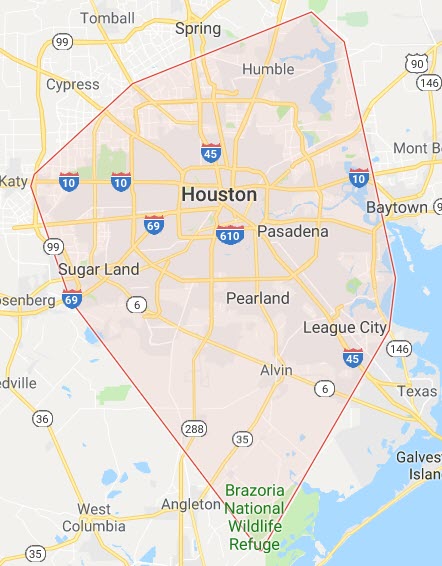
Call Now For Help With Nutria
Pasadena Nutria Removal Company
Professional Nutria Trapping and Elimination
 Are you looking for professional nutria removal services in Pasadena, TX? We offer solutions for any situation. From trapping to shooting, we have several ways of getting rid of nutria rats from property where damages are being caused. A non native species of Pasadena Texas, nutria continually expand their territory and compete with native animals for food and habitat.
Are you looking for professional nutria removal services in Pasadena, TX? We offer solutions for any situation. From trapping to shooting, we have several ways of getting rid of nutria rats from property where damages are being caused. A non native species of Pasadena Texas, nutria continually expand their territory and compete with native animals for food and habitat.
What Is A Nutria Rat?
Nutria is the North American name given to the Coypu (Myocastor coypus). It’s a large rodent that is native to South American countries. In Spanish-speaking countries, the otter is also called Nutria. The Nutria originated from the most temperate and subtropical areas of South America. It was due to Nutria fur ranchers that this species was introduced to North American countries. Despite its fur still having value today in some countries, the tendency of the Nutria to feed off agricultural cultures in a destructive way, as well as it’s burrowing habits, make the Nutria a species considered invasive and unwanted. Its habitat is usually composed of stretches of water, such as rivers, where they dig burrows to live in. They feed on the stems of plants that grow along the rivers.
The etymology of the word “Nutria”
The Nutria genus classification name is Myocastor, which derives from the Greek words for rat or mouse and for beaver. So Myocastor literally refers to a “beaver rat”. There are two common names used in English to refer to the Nurtia. The word “Nutria”, derives from the Spanish language, and is mostly used in North America and Asia. But in Spanish speaking countries, the word Nutria usually refers to otters. In Europe and Latin American countries, this ambiguity in names is solved by using the word “Coypu” to refer to the Nutria.
Nutria Taxonomy
The nutria was formally described for the first time as “Mus coypus”, which is in the same genus as the common mouse. This first description was done by Juan Ignacio Molina in 1782. 10 years later, in 1792, Robert Kerr assigned the Nutria the “Myocastor” genus.
There are four subspecies normally recognized for the nutria:
Myocastor Bonariensis – Common in South American countries such as Bolivia, Argentina, Uruguay and Brazil(mostly in the South). This is the most disseminated type of nutria throughout the other countries.
Myocastor Coypus – Usually found at the center of Chile and most of Bolivia.
Myocastor Melanops – Specific to the Chiloé Island.
Myocastor Santacruzan – Inhabits Patagonia.
Nutria phylogeny
Nutrias belong to the “Myocastor” genus, which is the sister group of the genus “Callistomys”. The Callistomys genus embodies the painted tree-rats. These two taxa (Myocastor and Callistomys) have common evolutionary affinities with different Mycastorini genera, such as the Proechimys the Hoplomys and the Trichomes.
The Appearance of The Nutria
The nutria’s appearance somewhat resembles a mixture of being a large rat and simultaneously a beaver, but with a very small tail. Its prominent orange teeth are usually well visible. Adult nutrias normally weight between 8 to 20 pounds and have a size in the 16-24 inch range for body length. But some nutrias weight up to 37 pounds. Their bodies are covered with a dark brown coarse fur on the outer layer, but they also have a soft, dense gray layer of fur on the inner layer. There are three very distinguishing characteristics in the nutria. They have a white patch of fur on the muzzle, very webbed hind feet, and prominent orange incisors.
Life Expectancy and Mating
When living in captivity, nutrias can live up to six years. But in the wild, most nutrias live past three years, with more than 80% dying in the first year or existence. The percentage of living nutrias that lives past three years is below 15%. The male nutria is sexually mature at four months and the female at three months. But sometimes they have a prolonged adolescence before becoming sexually mature that lasts up to nine months.
Female nutrias gestate for about 130 days and are able to give birth to up to 13 offspring. They can become pregnant again right after giving birth. The nutria’s offspring are precocial in the sense that they are born with fur and open eyes, often eating vegetation with their parents just hours after being born. They nurse for only up to eight weeks, leaving their mothers after that.
Habitat and Feeding Habits
Nutrias breed quickly and consume large amounts of vegetation that goes up to 25% of its body weight while feeding during all year-round. They usually eat the base of plant stems and also dig the soil looking for rhizomes and roots. Because of their eating habits, Nutrias end up creating areas where most of the biomass is removed, leaving environmental patches that disrupt the habitat of animals and humans that depend on marshes. Nutrias mostly live on freshwater marshes but can also live in brackish marshes. Living in salt marshes is very rare.
Damages To Pasadena Texas Property
The first nutria farms in the early 20th century were not very successful. Extensive and efficient nutria farming took place in South America during the 1920s. Later, the same type of farming was extended to North America and Europe. Nutrias in these farms either sometimes escaped or were released on purpose to remove aquatic vegetation or simply provide a game animal. Nutrias were first introduced to the ecosystem in Louisiana after escaping local fur farms that imported them from South America, in the 1930s. They were also released in the wild by some nutria farmers in the 1940s. Starting in Louisiana, nutrias spread along the Southern United States, destroying a lot of marshland in the way. After a severe decline in the commercial demand for nutria fur, they have become considered pests in many areas, as they eat up vegetation and marshes, destroying irrigation systems, eroding river banks and sometimes end up displacing other wild animals. For these reasons, in the early 2000s, bounties for dead nutria were paid by the Coastline Nutria Control Program. By 2003, due to extensive marshland damage, a multimillion-dollar eradication program was underway in the USA.
Harvesting and Nutria Trapping
Nutrias meat is considered lean and having low cholesterol, but most efforts to set up markets for nutria meat have not been successful. But in 2012, the Louisiana Wildlife Federation gave the Marsh Dog company the “Business Conservationist of the Year” award for discovering how to integrate nutria meat in dog food products with success, thus finding a great use for this eco-sustainable protein source.
Disease
Apart from environmental damage issues, nutrias are also the host for a specific nematode parasite named “Strongyloides Myopotami”, responsible for a skin infection that causes dermatitis such as “strongyloidiasis”, known as “nutria itch”.
Call us today if you are looking for professional nutria removal in Pasadena, TX.
The Critter Squad Inc.
(713) 396-6030
Nutria Removal Service Area


